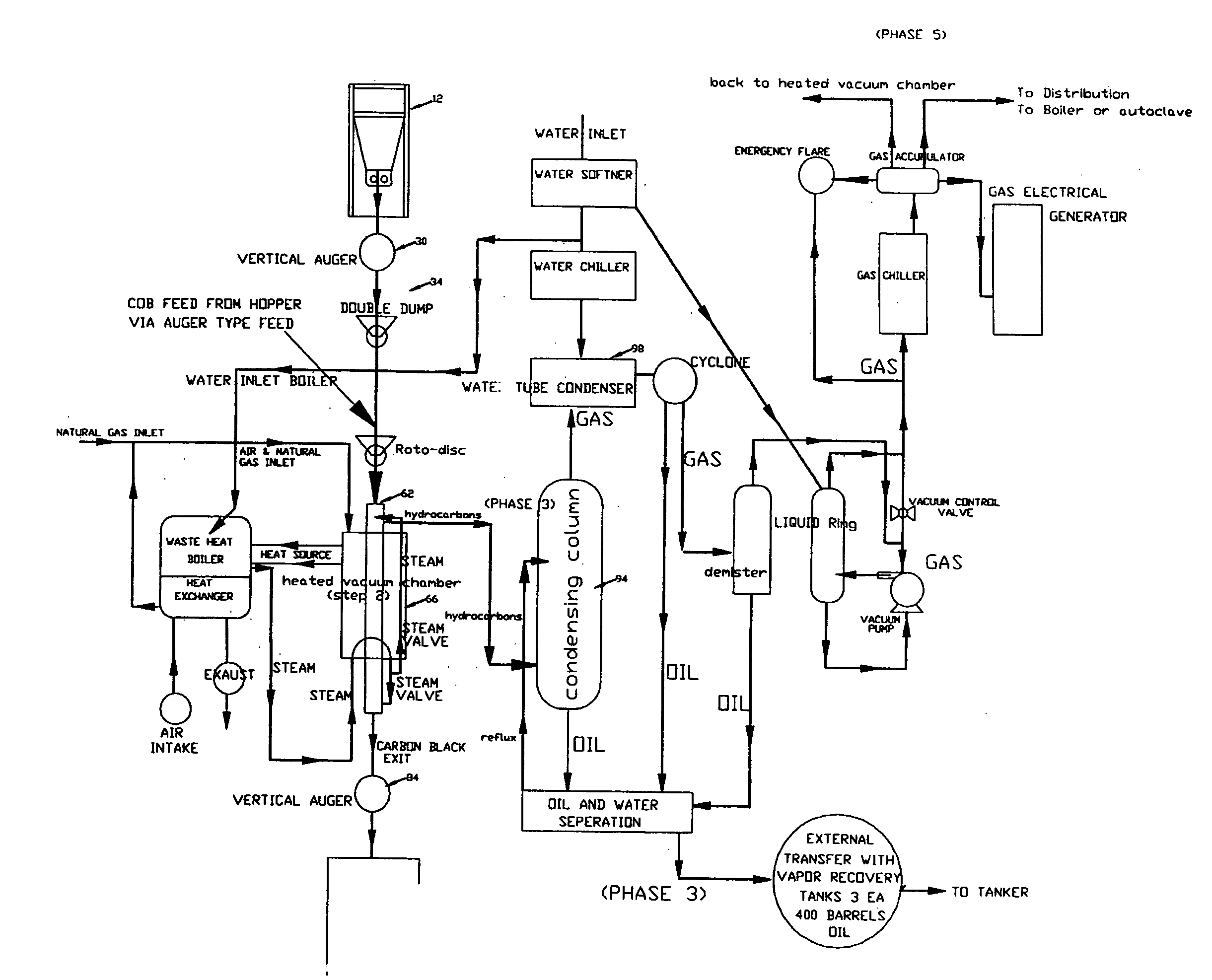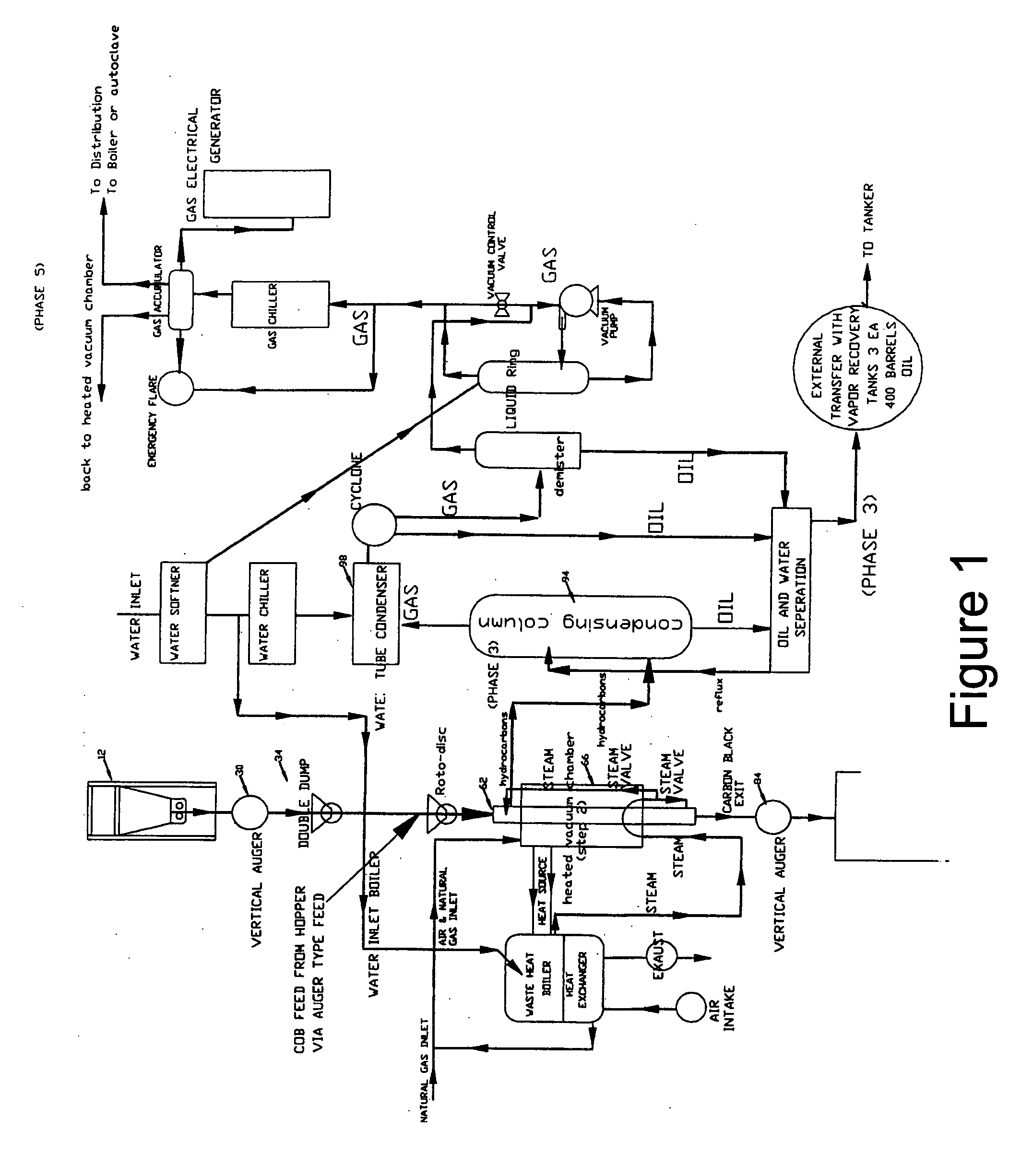Solvent and method of making a solvent
a solvent and solvent technology, applied in the field of solvents, can solve the problems of low production cost of limonene produced as citrus by-products, low production efficiency of paraffin and asphaltene in the oilfield, and inability to meet the requirements of continuous operation,
- Summary
- Abstract
- Description
- Claims
- Application Information
AI Technical Summary
Problems solved by technology
Method used
Image
Examples
Embodiment Construction
[0010]A process as described below produces a multi-component solvent from tire scrap rubber. The liquid product or solvent is produced along with carbon black solids and gas. The gas may be used in the process to heat the reactor and / or may be sold. The solvent is a complex component mixture compared to competitive products produced from petroleum. The process thermatically and metallurgically reforms the constituents and binders of rubber and reforms them into the solvent. The high percentage of limonene and naphthalene in the solvent is the result of reformation of the rubber constituents.
[0011]The following detailed analysis of the solvent shows over 290 components with significant levels of limonene, napthalenes, toluene and xylenes. The solvent may be further refined to produce a wide range of valuable commodity products. The multi-component and heavy aromatic composition of the product is unique. The solvent has a vast potential for treating paraffin and asphaltene problems i...
PUM
| Property | Measurement | Unit |
|---|---|---|
| temperature | aaaaa | aaaaa |
| temperature | aaaaa | aaaaa |
| temperature | aaaaa | aaaaa |
Abstract
Description
Claims
Application Information
 Login to View More
Login to View More - R&D
- Intellectual Property
- Life Sciences
- Materials
- Tech Scout
- Unparalleled Data Quality
- Higher Quality Content
- 60% Fewer Hallucinations
Browse by: Latest US Patents, China's latest patents, Technical Efficacy Thesaurus, Application Domain, Technology Topic, Popular Technical Reports.
© 2025 PatSnap. All rights reserved.Legal|Privacy policy|Modern Slavery Act Transparency Statement|Sitemap|About US| Contact US: help@patsnap.com


